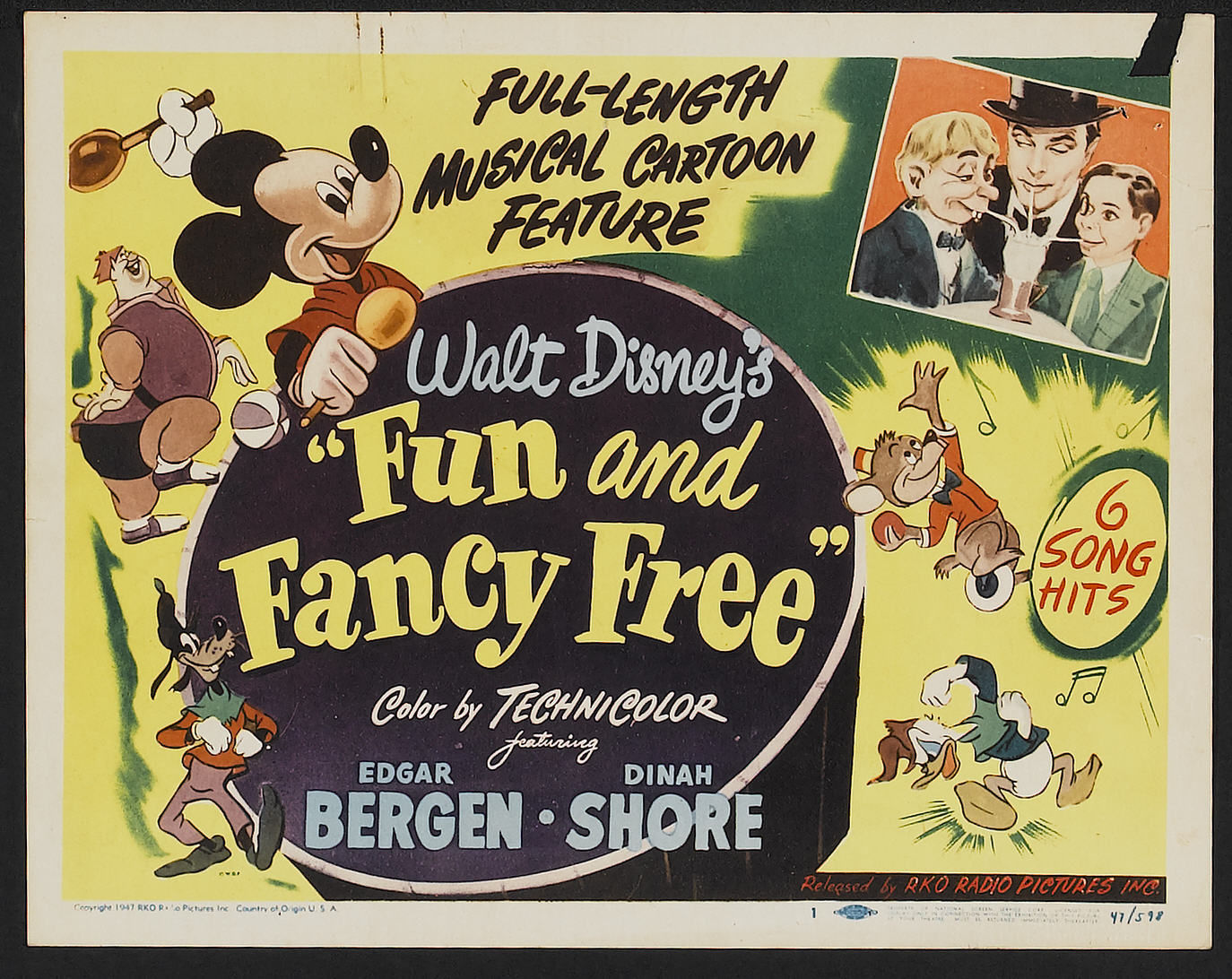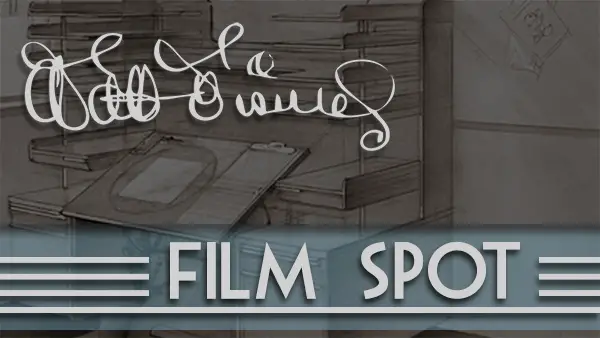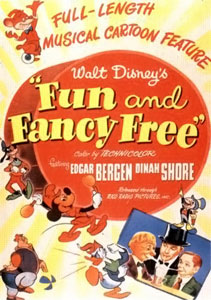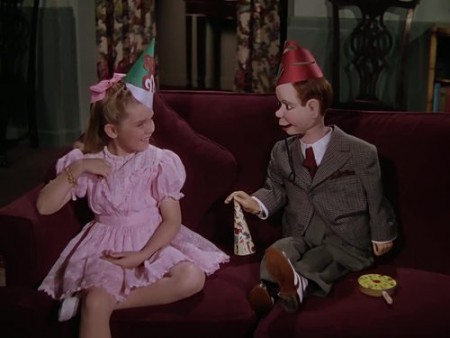In order of Disney filmography, after Make Mine Music, the live-action/animation hybrid Song of the South follows suit – however as it had never been officially recognized as a Walt Disney Animation Studios film (formerly Walt Disney Feature Animation), the film that follows is the similarly-packaged Fun and Fancy Free. The reasons for Song of the South‘s exclusion are many, from its over-reliance of live-action to its controversial place in history, so it has never had a real division to cling onto after its release.
Fun and Fancy Free is an overlooked special film with much in the way of its place in history and the seismic changes that were undergoing at the Walt Disney Studios. It consisted of two short films: Bongo & Mickey and the Beanstalk. The two shorts were intercut with bookended live-action segments of puppeteer Edgar Bergen and his puppets Charlie McCarthy and Mortimer Snerd telling stories to child actress Luana Patten at her birthday party. This was one of Disney earliest use of Hollywood talent to promote and elevate its films to the mainstream public conscious. Edgar Bergen was a wildly popular entertainment of the early-to-mid twentieth century and during the height of his career, was as beloved to children as Disney. This proved to be one of Disney’s first attempts at synergy, and helped prepare the company for the sponsorship-heavy era of early television broadcasting, which came less than a decade later.
In addition to Edgar Bergen, singer Dinah Shore narrated the Bongo short, paving the way for later pop singers like Peggy Lee and Louis Prima. There was no doubt that live-action was on Walt Disney’s mind, and he was using Fun and Fancy Free and Song of the South to prepare the public for live-action Disney films.
Bongo was a simple little tale – originally proposed as a prequel to Dumbo – that was put on hold when World War II began and the army took over the studio. After the war, Disney didn’t have enough resources to create a feature-length film out of Bongo, and it was finally coupled with Mickey and the Beanstalk.
Mickey and the Beanstalk was indicative of changing times at the Walt Disney Studios. Walt Disney’s imagination and ambition was expanding, and multiple projects were worked on at once – cheaply and effective – while the innovation of earlier years were put on hold. He returned to the simpler cartoons of Mickey Mouse and Silly Symphonies, and the sophistication of Pinocchio and Bambi took a long break. Disney knew this, and not wanting to cheapen the audience’s expectations, resolved to create a lengthy Mickey Mouse cartoon, long enough to go beyond the standard short, but short enough to not exceed feature-length. The idea was originally nixed Disney’s artists pitched him the idea of the starving trio in dreadful desperations, but he cautiously gave the film a greenlight anyways.
It would prove to be Disney’s last official outing as the voice of Mickey Mouse, as his duties began to spread thin and he lacked the energy to do so, in addition to his changing voice from chain smoking (although he returned to voice the character in The Mickey Mouse Club). Foley artist Jimmy MacDonald, who just so happened to be around Disney at the right time, was immediately given the sacred position of succeeding Walt Disney as the voice of Mickey Mouse.
Fun and Fancy Free was a great pop film, heavily indicative of the popular culture of its time and Disney’s place in it. It was the calm before the storm, before the 1950s came and redefined mid-century Americana, before Disney’s re-embrace of the timeless fairy tale, before Walt Disney rose to towering heights.





Leave a Reply